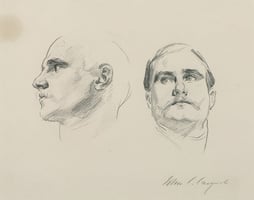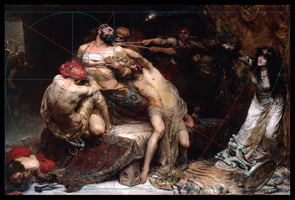1. What is Sight Size Painting? Sight size painting is a technique that can be used by artists to...
Goya's Darkest Masterpieces: A Look at His Famous Black Paintings
The Black Paintings of Francisco Goya are not only some of the most important and influential paintings of the Romantic period, but they also represent a profound exploration of the human psyche. These 14 dark and mysterious works, created between 1819 and 1823, towards the end of Goya's life, delve into the darkest impulses and fears that reside within us all.
Goya's mastery in capturing the essence of foreboding and mystery is unparalleled in the art world. The black backgrounds in these paintings serve as a canvas for the artist to confront the shadows that lurk within society and within ourselves. Through his dark and moody brushstrokes, Goya invites viewers to contemplate the capacity for violence and destruction that exists within the human condition.
The Black Paintings stand as a stark reminder of the fragility of life and the harsh realities of the world. Goya's ability to evoke a sense of despair and hopelessness in these works is a testament to his artistic genius. These paintings offer not only a glimpse into the mind of one of the greatest artists of the Romantic period but also a mirror reflecting the darkness that can lurk within the human soul.
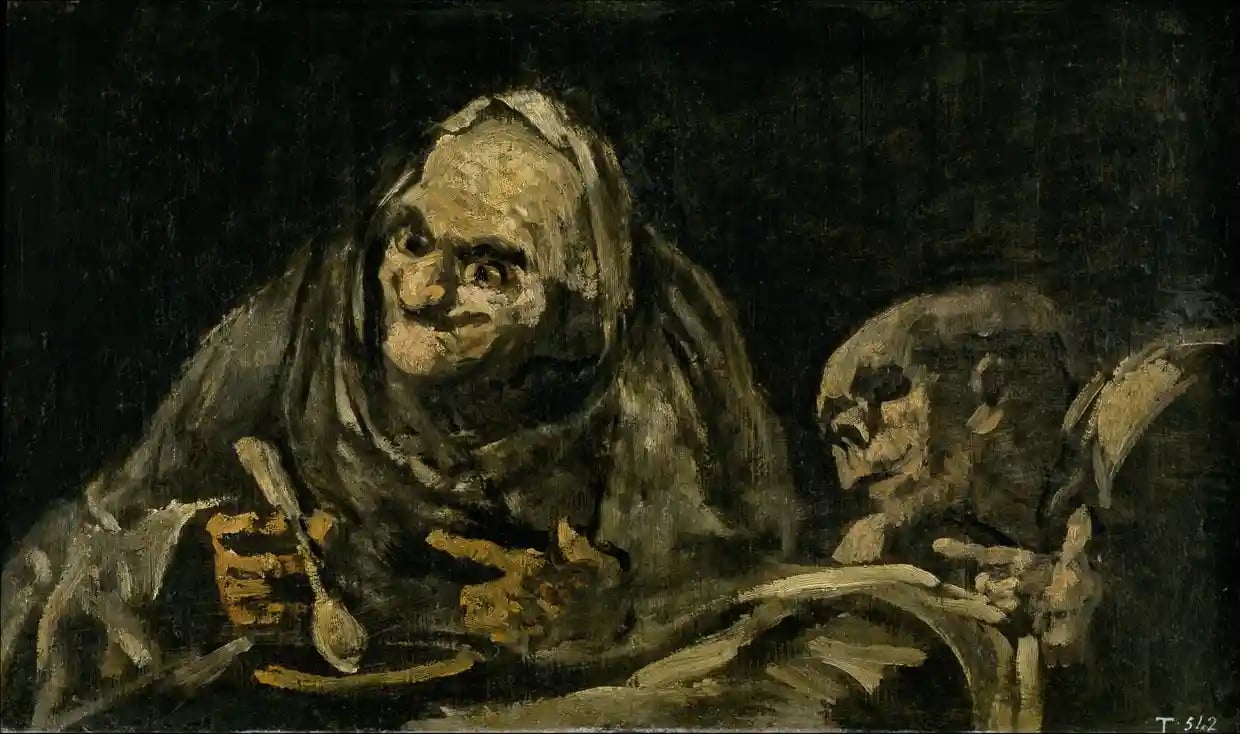
The Black Paintings are not only considered to be some of Goya's most personal and emotionally charged works, but they also offer a profound insight into the complexities of human nature. These dark and haunting masterpieces serve as a window into the mind of one of the most significant artists of the Romantic period, showcasing his deep exploration of the darker aspects of the human psyche.
Through the eerie and somber tones of the Black Paintings, Goya skillfully captures the essence of tragedy and horror, particularly emphasizing the devastating impact of war and the fragile nature of human life. Each stroke of his brush serves as a poignant reminder of the harsh realities that exist within society and within ourselves, highlighting the artist's unparalleled ability to confront and express the darkness that resides within us all.
Indeed, the Black Paintings not only showcase Goya's artistic genius but also demonstrate the profound power of art to confront and challenge our understanding of the world. They stand as a testament to the enduring resilience of the human spirit, offering a beacon of hope amidst the despair and darkness that they portray. In essence, these works serve as a powerful reminder that even in the bleakest of times, there is always a glimmer of light to guide us through.
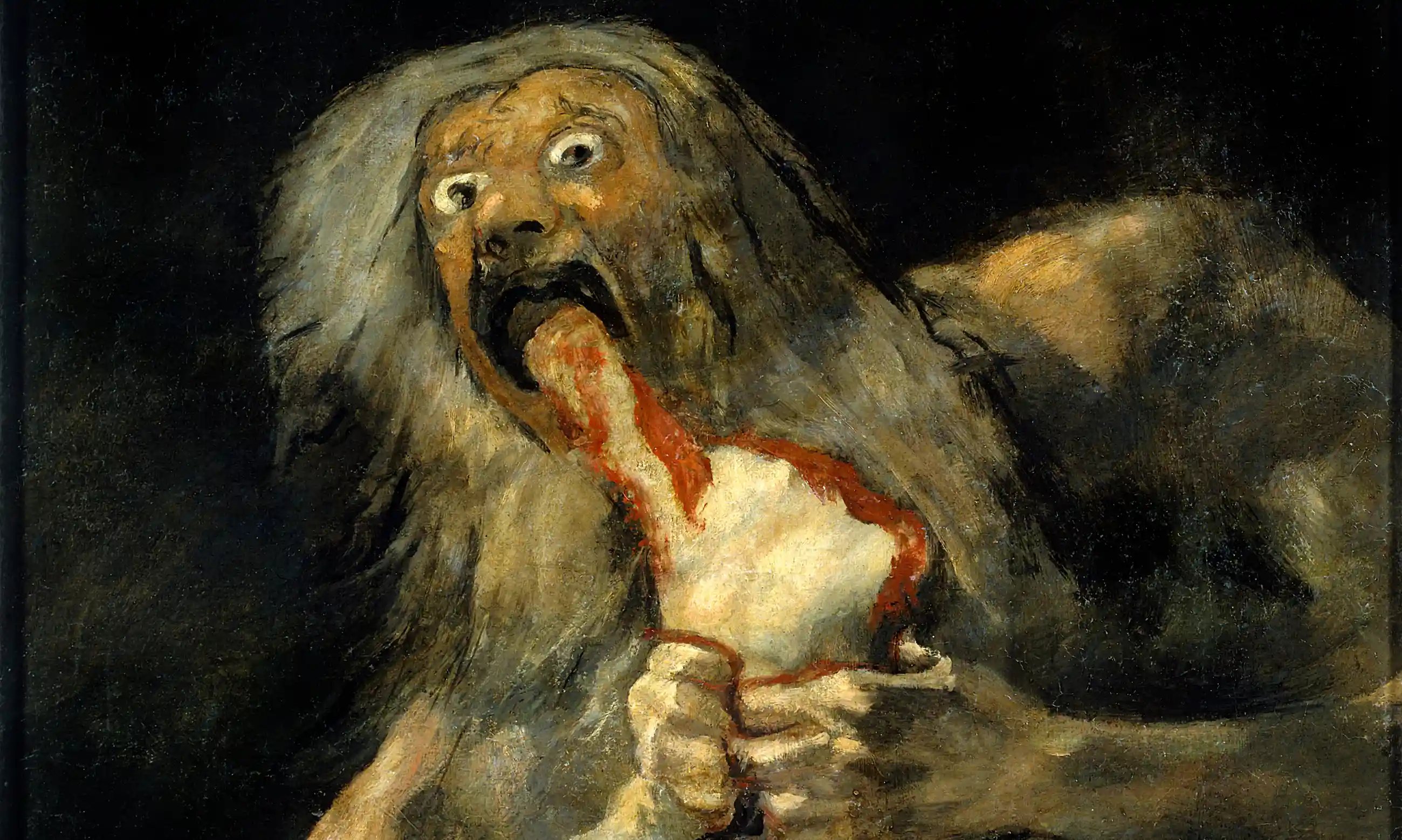
Francisco Goya was born in 1746 in the small town of Fuendetodos in Aragon, Spain. He began his career as an apprentice to Jos Luzn, a painter from Seville. In 1763, he moved to Madrid to study at the Royal Academy of Fine Arts.
Goya achieved great success as a court painter to the Spanish Crown. His work often depicted the luxury and excess of the nobility. However, his paintings also showed the harsh realities of life for the poor and downtrodden.
During the Napoleonic Wars, Goya's paintings often depicted the horrors of war. In his 1808 series of etchings known as the 'Disasters of War', Goya showed the brutal reality of warfare. These images were shocking in their depiction of death and destruction.
In his later years, Goya became increasingly reclusive and created some of his most famous works, the "Black Paintings." These dark and disturbing images were painted directly onto the walls of his house. They reflected Goya's growing sense of paranoia and isolation.
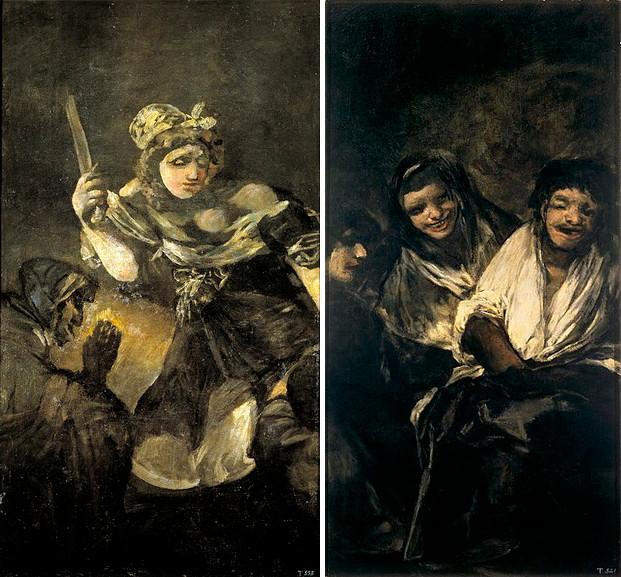
Goya retired to Bordeaux, France in 1824, where he died in 1828. His legacy as one of the great artists of his time is secure. Goya's paintings provide a window into the world of 18th and 19th century Spain. They show us the contrasts between the rich and the poor, the beauty and the horror of war, and the darkness that can lurk within the human soul.
In the final years of his life, Spanish artist Francisco de Goya y Lucientes created a series of dark and haunting paintings known as the Black Paintings. These works are characterized by their somber tones and themes of death, fear, and despair.
Goya's Black Paintings are some of his most famous and renowned works of art. They are considered to be among the greatest examples of Romantic art.
Goya likely drew inspiration for the Black Paintings from his own dark experiences during the Peninsular War. These experiences left him feeling deeply pessimistic about humanity. This is reflected in the paintings, which offer a bleak view of the human condition.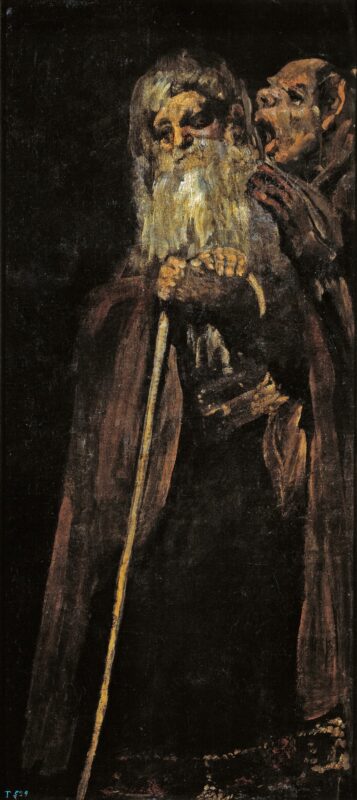
The Black Paintings were not publicly displayed during Goya's lifetime. They were not widely known until after his death. Since their rediscovery, the Black Paintings have been the subject of much scholarly and critical interpretation.
The Black Paintings offer a fascinating glimpse into Goya's mind and the dark side of human nature. They are a powerful and disturbing reminder of the fragility of life.
Goya's Black Paintings are some of the most important and influential works of art ever created. They offer a unique and disturbing perspective on the human experience.
The Black Paintings are among the most famous and enigmatic works of art ever created. Painted by the Spanish artist Francisco Goya during the last years of his life, they represent a radical departure from his earlier work in both style and subject matter.
Dark and foreboding, the paintings depict scenes of violence, death, and madness. They are widely considered to be among the greatest paintings of all time, and their significance is still debated by scholars.
Some believe that the Black Paintings were inspired by Goya's dark experiences during the Napoleonic Wars and the Spanish Inquisition. Others believe that they were simply the expression of Goya's dark and morbid imagination.
Whatever the case may be, the Black Paintings offer a fascinating glimpse into the mind of one of history's most enigmatic artists.
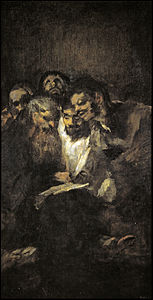
Goya created the Black Paintings towards the end of his life, when he was in self-imposed exile. They are a series of 14 paintings, all of which are dark and mysterious. Many believe that they were inspired by the artist's dark experiences during the Napoleonic Wars and the Spanish Inquisition. Others believe that they were simply the expression of Goya's dark and morbid imagination.
Whatever the case may be, the Black Paintings are a fascinating glimpse into the mind of one of history's most enigmatic artists. They are a radical departure from his earlier work, both in style and in subject matter. And they continue to be the subject of much speculation and debate.
Francisco Goya's Black Paintings are some of the most famous and controversial works in art history. Painted during the last years of Goya's life, when the artist was living in self-imposed exile in Spain, the Black Paintings are characterized by their dark and somber tone, and their often disturbing subject matter.
Goya's black paintings have been interpreted in many different ways, and their meaning is still debated by scholars today. Despite their dark themes, the Black Paintings are considered to be among Goya's greatest masterpieces.
The Black Paintings have had a lasting impact on the art world, and continue to be studied and admired today. In this blog post, we will take a closer look at the Black Paintings, their history, and their impact on the art world.
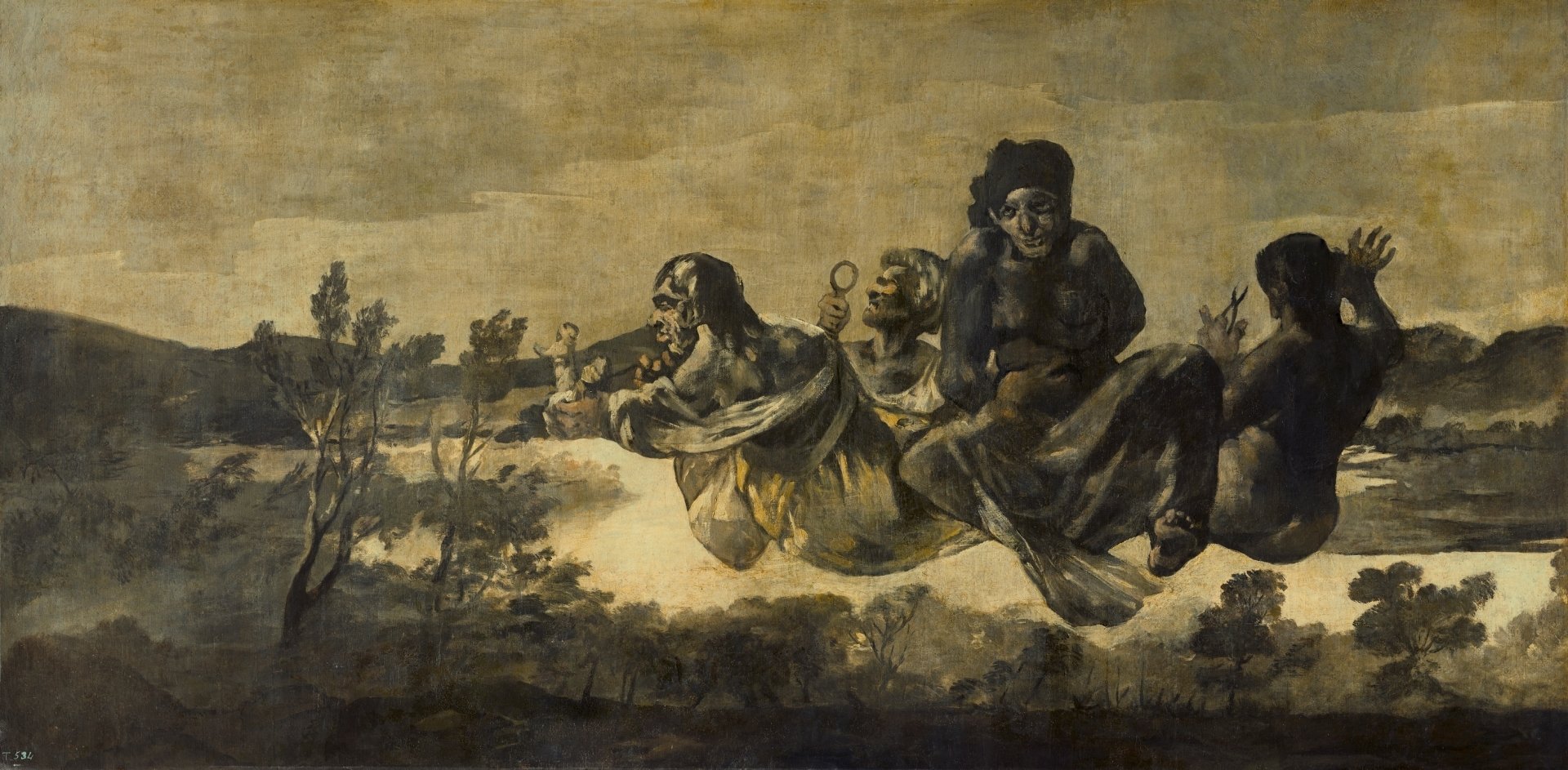
Goya's Black Paintings stand as a haunting reflection of the human psyche, delving into the depths of our darkest impulses and fears. These masterpieces serve as a stark reminder of the capacity for violence and destruction that resides within us all. Despite the grim subject matter they portray, these paintings are revered as masterpieces that have stood the test of time.
In the realm of art history, Goya's Black Paintings hold a unique place as a profound exploration of the human condition. They serve as a poignant reminder of the importance of art in confronting the shadows that lurk within society and within ourselves. These dark and foreboding works encapsulate the essence of hope amidst despair, offering a beacon of light in the bleakest of times.
Goya's legacy as a master artist is epitomized in these renowned works, crafted during a tumultuous period in history. The Black Paintings serve as a testament to the enduring power of art to confront and challenge our understanding of the world. They stand as a testament to the resilience of the human spirit and the potential for redemption even in the face of darkness.
Amidst the grim imagery and somber tones of Goya's Black Paintings, there lies a message of resilience and hope. These works serve as a reminder that even in the darkest of times, there is always a glimmer of light to guide us through. Goya's black paintings continue to captivate audiences with their profound exploration of the human experience and their enduring message of hope in the face of adversity.

